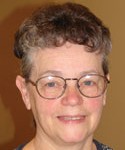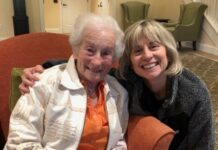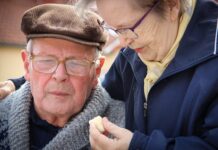By Carol Crawford
Seasonal affective disorder, also known as SAD, is a winter depression that occurs approximately the same time every year.
 In Massachusetts we have now turned back our clocks. Some time in September or October, we start going to work in the dark, and we return home in the dark. We start experiencing symptoms such as: difficulty waking up, oversleeping, overeating, difficulty concentrating and withdrawal of social activities, anxiety and irritability.
In Massachusetts we have now turned back our clocks. Some time in September or October, we start going to work in the dark, and we return home in the dark. We start experiencing symptoms such as: difficulty waking up, oversleeping, overeating, difficulty concentrating and withdrawal of social activities, anxiety and irritability.
All these symptoms start taking a toll on our bodies. The darkness becomes depressing. These seasonal mood variations are believed to be related to light deprivation. Symptoms come and go the same time each year.
SAD is difficult to diagnose, because it is very similar to non-seasonal depression. To diagnose SAD your doctor will want to know if your depression changes or gets better when the season changes. Let your doctor know if you’re craving more carbohydrates along with the other symptoms or if a close relative such as a brother, sister or parent suffers from SAD. The more you understand SAD and how it affects you, the easier it is to treat.
Between 10 to 20 percent of people in the United States may experience a form of SAD.
SAD is more common in women than in men. Winter onset SAD is more common in northern regions, where the winter season is typically longer and harsher.
There are several ways to treat SAD. Two of the most commonly used treatments are antidepressants, which improve the balance of brain chemicals that affect mood, and counseling or cognitive behavioral therapy, which can also be helpful.
Exercise may also help you feel better. Moderate exercise — such as walking bicycling and swimming — is a good way to get started, after consulting your physician.
Doctors often prescribe light therapy to treat SAD. Bright light treatment works well with most people who suffer from SAD, and it’s easy to use. You may feel better within days after starting light therapy.
Light therapy like medication must be used consistently in order to be effective. You need to stick with it and use it everyday until the seasons change. When used properly, light therapy seems to have few side effects. Consult your doctor for recommended use.
Hopefully this information can get you through those dark winter blues and bring back that sunny disposition.
Carol Crawford is the retail manager at Apple Home Care, 41 Redemption Rock Trail in Sterling, Mass. For more information call her at 978-422-0000, contact her by e-mail at ccrawford@applehomecare.com or visit www.applehomecare.com.












